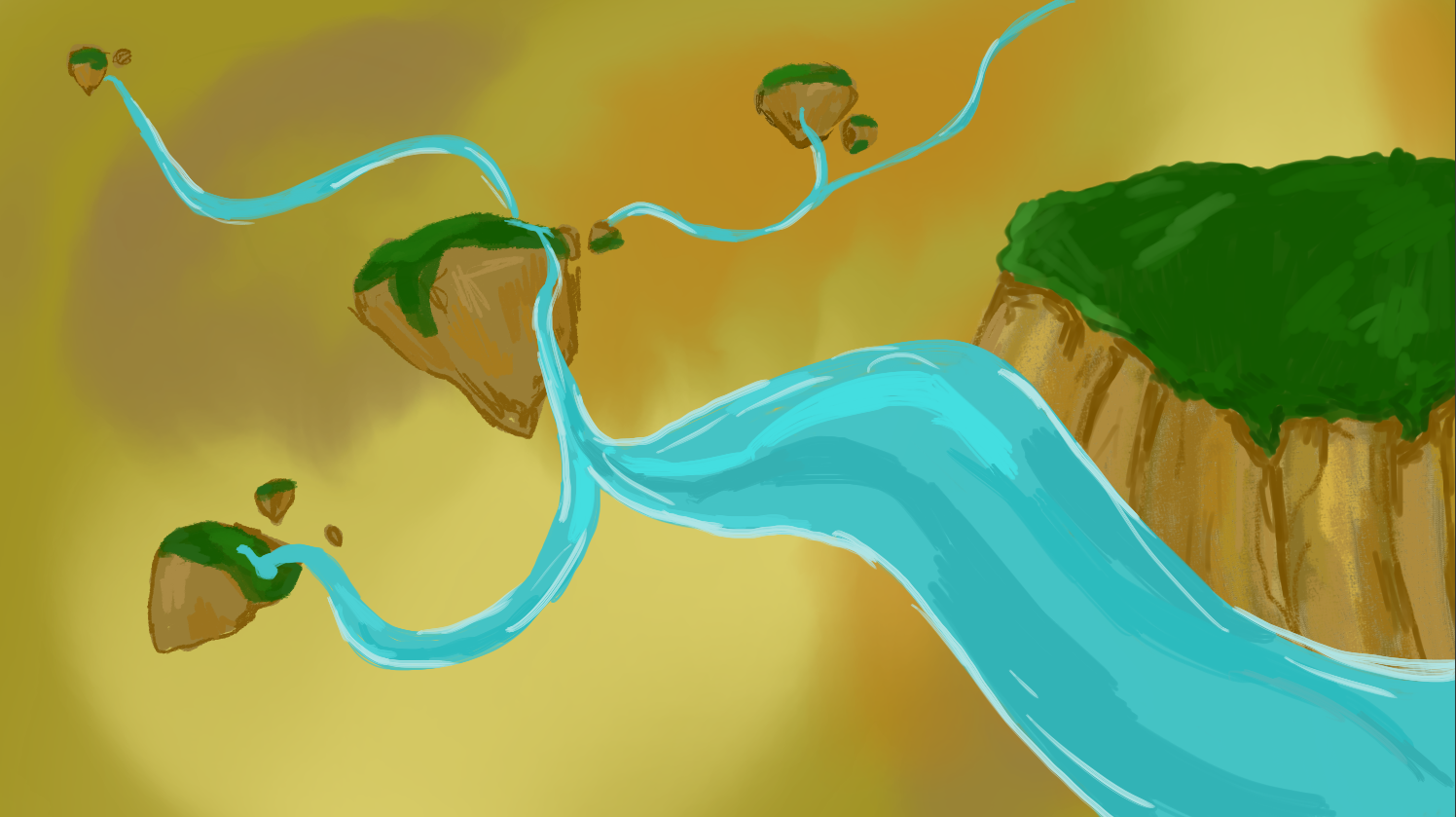Jovian Ray
Anatomy
Jovian rays have a very atypical body plan for an aurvad. Jovian rays lack any arms or legs, and their only worthy appendage are their tails, that simply serve as an extension to their thin bodies. Their wings have formed as an entirely separate structure, only connected to their bodies by tendons and muscles, which holds the two parts of the animal together.
On the ends of their snouts are a large proboscis, a characteristic of aurvads. Their probosci can be used to create deafening honks, their main form of communication with conspecifics. On the bottom of their necks and on their tails are red, bulbous sacs. These sacs produce a potent chemical that is used to communicate with others of their species.
Diet
These animals are herbivorous, consuming plant matter found floating through the skies of Jupiter. They use their large probosci to smell out large clusters of plants, and they are very effective at doing so.
Jovian rays typically consume a diet of rockroots, which grow plentifully and release a strong smell to these animals. Jovians will also use rockroot in captive ray diets, because cultivation is easy.
Reproduction
Mating season for jovian rays falls around a similar time for most animals in Jupiter, lasting an entire month. Unfortunately, it is a smelly and loud time, and most jovians spend the month with earbuds and noseplugs firmly placed within their orifices.
During mating season, both male and female jovian rays increase production of chemicals in their bulbous sacs that are released into their surroundings. These chemicals essentially let other rays that they are willing to mate, and the other will respond by secreting another chemical, that the first ray will detect.
If these chemicals can't attract a mate, their next move is to honk at the top of their lungs. Their proboscis amplifies the noises they produce, and their honks can be heard up to 10 miles, or 16 kilometres, away.
Behaviour
Jovian rays are one of the most friendly animals, thanks to the majority of the planet's population being domesticated. While few groups of these rays exist completely wildly, most are kept as transport or company. Outside of mating season, the animals are fairly quiet, only vocalising when experiencing intense emotions; typically anger, happiness, nervousness, or inquisitivity.
Domestication
Jovian rays have been domesticated for almost a thousand years. Thanks to their easy-going natures and intelligence, they were and are easy to train. They were originally used as vehicles, to transport both people and materials across long distances, but more recently they have made favourable pets.
Subspecies
There are three recognised subspecies of jovian ray:Peacock Jovian Ray
Peacock jovian rays have thousands of display feathers along their wings. Scientists are unsure if these have any evolutionary advantage, or are simply to appeal to others of their species. Whatever it is, scientists hope that these feathers replace their honkings and horrible smell during mating seasons.Eclectic Jovian Ray
The only thing differing peacock jovian rays from eclectiv jovian rays are the lack of feathers. Instead, the scales on these magnificent animals are brightly coloured. These can even change colour, as the scales are covered in miniscule nanocrystals.
Tensing of the skin causes the nanocrystals to refract light differently, and as a result changes the entire animal's colour from reds to greens, through the entire light spectrum.
Silent Jovian Ray
These rays honk at decibels lower than jovians can hear, hence the name. They are difficult to breed and are extremely expensive as a result, which is why very few people have them. What they lack in noise they make up for in smell, however.Average Wingspan
20 metres (65 feet)





Stinky loud babies! I love them.
I love them too! :D